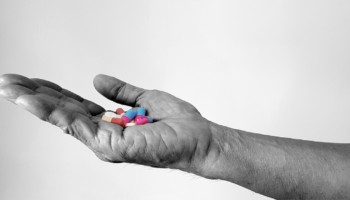PTSD & Substance Use: Is There a Connection?
The Nystrom & Associates provider consulted for this article on PTSD & Substance Use is R. John Sutherland, PhD, ABPP, LADC, MHA, and Vice President of Addiction Services.
The more we learn about post-traumatic stress disorder (PTSD), the more we see how it can lead to other mental health issues. And while most people who go through a traumatic event don’t develop PTSD, studies find that 6% of the US population will experience PTSD in their lifetime. And, sadly, people with PTSD have a much higher chance of experiencing substance use issues.
But why is this? And what can be done to treat PTSD and substance use? In this article, we’ll discuss how PTSD may lead to substance use and we’ll cover the most effective treatments for healing from both PTSD and substance use disorder.
Related: What is Substance Use Disorder?
The Difference Between Trauma and PTSD
At some point in their life, most people will experience trauma. It could be a life-threatening event like a car accident, physical or emotional abuse, witnessing a natural disaster, or anything else that caused them physical or emotional pain. Most people who experience trauma don’t develop PTSD. They tend to have a natural recovery, coming back to their normal selves without any lingering symptoms.
However, when certain symptoms persist for a month or more, this is likely PTSD.
How PTSD Can Lead to Substance Use
According to the National Center for PTSD, there are four main symptoms of PTSD:
- Reliving the event (also called re-experiencing)
- Avoiding things that remind you of the event.
- Having more negative thoughts and feelings than you did before the event.
- Feeling on edge or “keyed up” (also called hyperarousal or hypervigilance).
Dr. Sutherland indicates that avoidance and negative cognition and mood largely contribute to the development and maintenance of PTSD and substance use disorder.
He says that while, “avoidance releases anxiety in the short run, in the long run it becomes less effective, resulting in someone using more substances to get the same effect.”
He also notes that while someone is using substances, their negative thoughts and feelings could increase because they criticize or judge themselves for not being able to cope with the symptoms of PTSD.
All these factors can worsen substance use. So, what are the most effective treatments for PTSD and Substance Use?
Treatment Options for PTSD and Substance Use
The National Center for PTSD notes the three most effective types of trauma-focused psychotherapy are:
- Prolonged Exposure (PE) where you share the trauma repeatedly until the memories no longer upset you. It also involves going to places and doing things that you’ve avoided because of the trauma.
- Eye Movement Desensitization and Reprocessing (EMDR) where you follow sounds or hand movement while talking about the trauma. This helps the brain reprocess the trauma and work through the traumatic memories.
- Cognitive Processing Therapy (CPT) where you learn to change how you think about the trauma.
In coordination with these, it’s best to tackle the substance use along with the PTSD symptoms. For this reason, you may want to consider an outpatient substance use treatment program or residential program, depending on what you need.
A Word from Nystrom & Associates
If you're struggling with PTSD and substance use, there is hope. Nystrom & Associates has providers who specialize in Prolonged Exposure (PE) therapy, EMDR, and substance use.
We can help you create a personalized treatment plan designed for your unique needs. We also offer a variety of treatment options, including residential, outpatient, and group therapy.
Call 1-844-NYSTROM or request an appointment online to get started!







